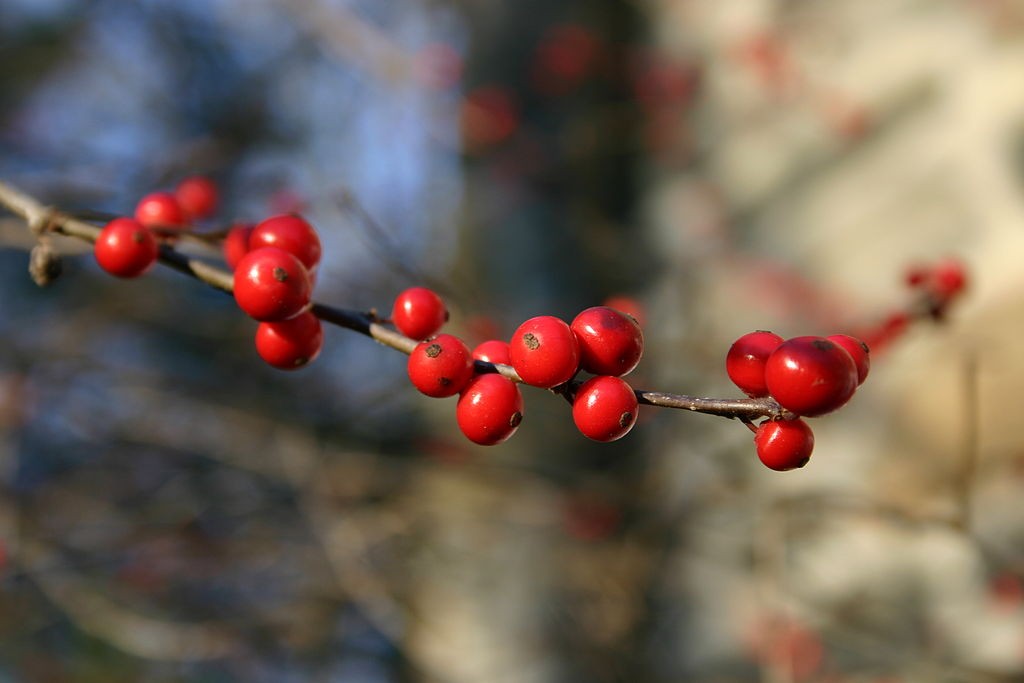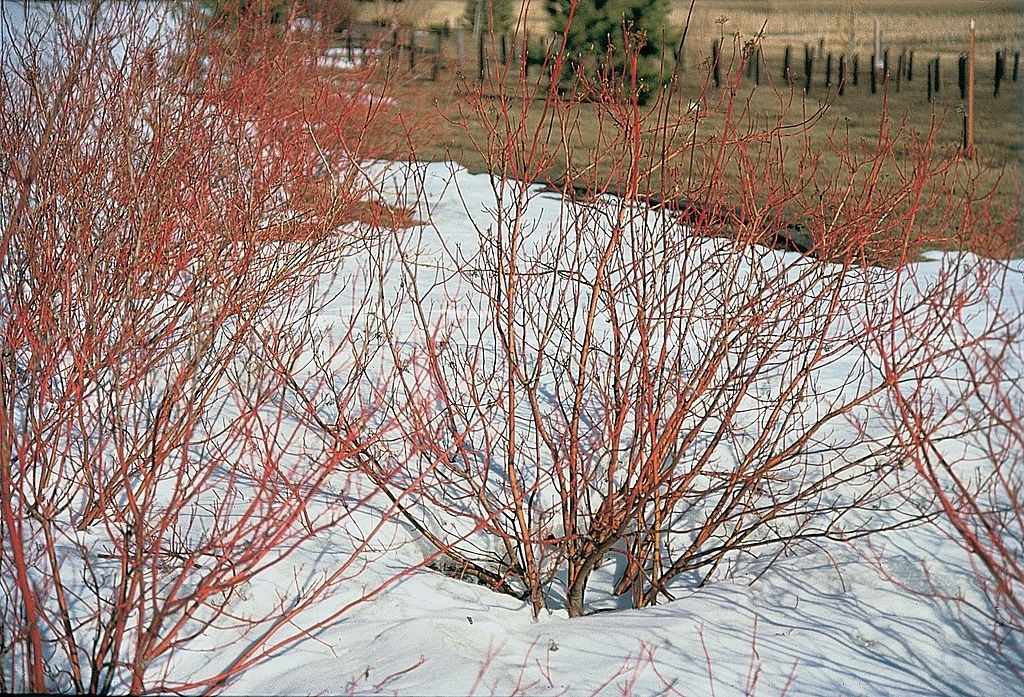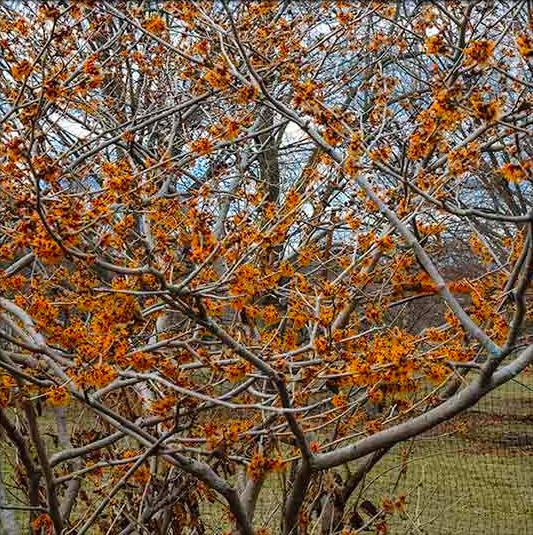Putting a touch of color in a monochrome landscape
Shortly after the New Year puts a few weeks under its belt and is demoted to just another year, color seems to drain out of the landscape. It’s if everything bright and cheery got packed away with the holiday decorations. Wherever I look, the world is either white or some shade of brown. Maybe it’s a function of winter’s short days and long nights, or the holiday bills piling up, or the cold, or because Kodachrome got discontinued. Even the evergreens along roadways are tinged brown, burned by road salt.

Winterberry, a native deciduous holly bush has red berries through to spring. Photo: SB Johnny, Creative Commons, some rights reserved
Because my eyes are hungry these days for any visual delight, color stands out like a sore thumb. Which would probably also be conspicuous against winter’s backdrop. Yet not as much as plants like red-stem dogwood, a shrub which prefers wet places, or winterberry, a native deciduous holly bush that has red berries through to spring. Another source of color this time of year are the catalogs that come pouring in. No, not the swimsuit ones; I’m talking about those from nursery and garden suppliers.
Granted, the shrubs and trees featured in those glossy pictures have probably been fed nothing but steroids, fertilizers, and maybe rocket fuel, or else the images have been photoshopped. We want that lush specimen in our yard, yet we know it won’t quite measure up to the photo. But take heart if you’ve had less than stellar results landscaping in the past—Many of the plants which provide the best winter colors are also the most bulletproof.

Red stem dogwood. First-year shoots are the most brilliant, so it is customary to cut them to the ground at the end of winter. Photo: USDA, public domain
In the wild, the aforementioned red twig or red osier dogwood (Cornus stolonifera) is more abundant in wetlands, but once established, will do quite well in nearly all conditions. The first-year shoots are the most brilliant, so it is customary to cut them to the ground at the end of winter and let them sprout back. This produces a 3-to-4-foot cluster of shoots, depending on your soil, that are especially appealing in winter. You can buy a named cultivar such as ‘Midwinter Fire’ from a nursery, or dig your own if you have a source. They transplant easily.
Many viburnums keep their berries, usually some shade of blue, well into winter. These also transplant readily, and can be sourced from natural settings. Cultivars of withewood viburnum (Viburnum nudum) like ‘Winterthur,’ or of arrowwood viburnum (V. dentata), for example ‘Blue Muffin,’ are more striking than their wild cousins. These 6-to-8-foot shrubs have great fall leaf color as well, and provide winter food for birds.
Winterberry (Ilex verticillata) is a true holly, but does not look like you’d expect because it is deciduous. Again, this 6-to-9-foot shrub is available, potentially at least, from a wild source, but since winterberry is dioecious, meaning some plants are boys and some girls, you need both for the female to produce fruit. A nursery will sell you the right proportion to get the best wintertime berries. Also there are many great cultivars like ‘Winter Red’ from which to choose.

“Jelana” witch hazel in February bloom at the Royal Botanical Gardens’ Arboretum in Hamilton, Ontario. Photo: Dean Gugler, Creative Commons, some rights reserved
Lastly I’ll mention witch hazel (Hamamelis virginiana and H. vernalis), an oft-overlooked understory plant. It seems very plain and unassuming in the fall, but then will surprise you with flowers in either October-November, or February-March, depending on the species. In the native strain, petals are yellow, but cultivars will vary. One called ‘Jelena’ has coppery-orange blossoms.
These are all low-maintenance plants, and hardy to USDA Zone 4 or colder. Red-twig dogwood is hardy to Zone 2, which I’m pretty sure means you can plant it in solid ice. Look through a catalog, or online, and see if anything colorful—plants, that is—catches your eye. Let’s all pitch in to help assuage the winter color shortage. Even if it means hanging plastic Easter eggs from the bushes in February.
Paul Hetzler is a horticulture and natural resources educator with Cornell Cooperative Extension of St. Lawrence County.
Tags: gardening, nature, shrubs, winter color







